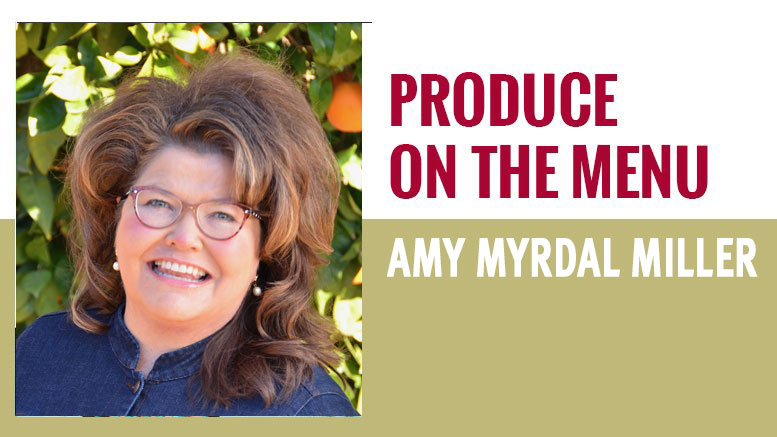Does Anyone Care About Coleslaw?
May 29, 2024 | 5 min to read
Coleslaw, once a beloved comfort food, has fallen out of favor in restaurants due to its predictable blandness and excessive sweetness. Chef Roxanne O’Brien critiques the lack of attention to this side dish, while culinary experts advocate for better quality through balanced flavors and more diverse ingredients. Suggestions include incorporating vinegar for acidity, using fresh herbs, and exploring a variety of vegetables beyond cabbage. Chefs urge operators to enhance both the preparation and presentation of coleslaw to elevate its status in dining.

Originally printed in the April 2024 issue of Produce Business.
So many good memories of family meals from my childhood include coleslaw made with cabbage from my mom’s ambitious garden. Coleslaw is a comfort food for me, one I often make at home. Sadly, most coleslaw available in restaurants today is cloyingly sweet, bland, and devoid of inviting contrast in color and texture.
Chef Roxanne O’Brien, a restaurant consultant from Sacramento, CA, asserts, “Coleslaw in most restaurants and delis is abysmal.”
I couldn’t agree more. I have nearly given up ordering it in restaurants. I recently said to my husband after a disappointing experience, “Has coleslaw become the Rodney Dangerfield of vegetable sides? It gets no respect.”
This led me to explore this issue with trusted culinary colleagues from across the restaurant industry.
When I asked Maeve Webster of Menu Matters, a menu consulting firm, why she thinks there is so much bad coleslaw served in restaurants, she responded quickly. “I think it’s easy to get lazy with this side. It’s so often offered and put on the plate and often not consumed that operators likely don’t pay it the attention they should. Now, obviously, it’ll be left on the plate if a chef isn’t paying any attention to it, so it’s a downward spiral of declining quality. It’s typically just a mayo-y mass of shredded veggies with no flavor.”
“If you’re putting it on the plate, pay attention to it. If you don’t want to pay attention to it, don’t menu it.”
I was mentally cheering when she commented, “If you’re putting it on the plate, pay attention to it. If you don’t want to pay attention to it, don’t menu it.”
I then asked three chefs who do culinary development for restaurants what creates great coleslaw. Chef Jessica Foust, RDN, director of global product development and menu management for Little Caesars, says, “It depends on the application. As a condiment, having a nicely chopped mixture is important to get the texture, flavor, and neatness that is often needed. For side dishes, a more thinly shaved and texturally complete mixture is my preference. In my opinion, a great coleslaw has Napa, green and red cabbage as well as carrots and other colorful veggies that make it not only visually stunning, but also perfectly crisp and texturally complex.”
Everyone I spoke with agreed flavor needs to be balanced with a dressing that includes some acid. Chef Abbie Gellman, MS, RDN, a consulting chef based in New York City, commented, “The first thing I look for in coleslaw is acid. This could come from vinegar, some sort of citrus juice, or a mixture of both; it brightens up the whole dish.”
Gellman recommends vinegar-based coleslaw versus a creamy-based coleslaw when it’s paired with other foods that may have higher fat content (like fried fish tacos, smoked brisket or ribs). “The acid helps cut through the fat.”
O’Brien recommends using lots of fresh herbs and some Dijon or other mustard in the dressing. She commented, “Coleslaw is typically too sweet. I am not sure why sugar has to be in every dressing a restaurant uses. Cabbage and other greens have their own natural sweetness.”
With nearly three out of four consumers in the U.S. claiming they avoid, or limit added sugar, according to the latest International Food Information Council Food and Health Survey, perhaps the tide will finally turn on sweet, bland coleslaw dressing.
Foust recommends using dried fruit as a smart strategy for adding natural sweetness and textural contrast. “Strive to develop a more balanced vinegar to mayonnaise dressing with hints of sweetness from dried fruit, which will add delightfully surprising sweetness that is different in every bite and less homogenous sweetness that typical coleslaw dressings deliver.”
I also wanted to explore how vegetables beyond cabbage can be used to transform coleslaw from ordinary to extraordinary. Gellman says, “Cabbage is standard in most coleslaw, but why stop there? How about some grated carrots, radishes or beets? And finally, add a pop of flavor with chopped garlic and fresh herbs.”
Webster recommends menu R&D professionals consider using a wider array of cabbage varietals and vegetables that add color. “We’re in a plant-forward golden age; let’s not get stuck thinking of only the same dozen veggies.”
Foust is a fan of using pickled vegetables to boost flavor. “In addition to raw ingredients that provide crunch, explore pickled ingredients like red onions, julienned dill pickles, or even capers to add another level of texture and flavor that can move coleslaw out of its traditional boundaries.”
Webster offers this final piece of advice for restaurant operators: “Stop putting coleslaw in boring plastic cups or plopping it on the plate with no thought. Make it a more integral part of the dish experience and not something that can be easily lifted off and put on the table to be forgotten or ignored,” reminding the reader that preparation, as well as presentation, matters when it comes to food.
So, to answer the question I started this column with, the answer is yes. Many chefs care about coleslaw and are eager to see the U.S. restaurant industry do more to create coleslaw that gets eaten and remembered versus left on the plate and thrown in the trash.

Amy Myrdal Miller, MS, RDN, FAND is a farmer’s daughter from North Dakota, award-winning dietitian, and founder and president of Farmer’s Daughter Consulting, Inc. She is the retail nutrition marketing and foodservice partnership specialist for the Buy California Marketing Agreement/CA GROWN, a member of the Texas A&M Institute for Advancing Health Through Agriculture AgriLife External Advisory Board, and co-author of Cooking á la Heart, a 500-recipe cookbook based on global plant-forward eating cultures. Learn more at www.farmersdaughterconsulting.com and follow her insights on food and flavor on social media @alaheartamy.
3 of 15 article in Produce Business May 2024

